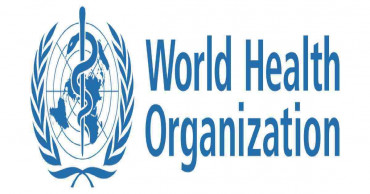pandemic impacts
Dental colleges entry tests rescheduled for June 11
The admission tests to all dental colleges across the country for the academic year 2020-21 have been rescheduled for June 11.
The previous date of intake tests was on April 30.
Also read: Buet admission test: Application deadline extended to May 3
The admission test for all dental colleges and dental units has been rescheduled due to the surge of Covid-19 cases in the second wave of pandemic, said a notification signed by Dr AKM Ahsan Habib, director of Directorate General of Health Services (Medical Education).
Read No assignments for secondary school students
4 years ago
No assignments for secondary school students
The Bangladesh government has suspended all assignment activities for students of classes VI to IX across schools in the country in view of the worsening situation of Covid-19.
The order will remain in effect until further notice, the Directorate of Secondary and Higher Education (DSHE) said in a circular on Friday (May 23, 2021).
After a year of closure due to the pandemic, the government on February 27 announced that all schools and colleges would reopen on March 30.
Read Schools, colleges likely to remain closed until Eid: Dipu
But it had to backtrack on its plan.
On March 25, Education Minister Dr Dipu Moni announced that all schools and colleges across the country would remain closed till Eid-ul-Fitr vacation.
UGC directives for online education
On May 7, last year, the University Grants Commission (UGC) published a guideline on conducting courses online, including teaching, arranging exams, making assessments, and also private university admission tests.
Also read: Prepare to reopen: DSHE to educational institutions
Bangladesh's Covid-19 picture
Bangladesh recorded 88 coronavirus-related deaths in 24 hours till Friday morning, as the country grapples to contain the second wave of the virus.
Health authorities also reported 3,629 new cases, said the Directorate General of Health Services in a handout.
Also read: Covid-19: Bangladesh’s fatalities rise to 7,981
The coronavirus death toll now stands at 10,869 with the mortality rate slightly rising to 1.47 percent after staying at 1.46 for the last two days.
Meanwhile, the daily infection rate fell to 14 percent from Thursday’s 14.63 percent.
Between April 16 and 19, the country recorded over 100 deaths breaking previous daily records. Bangladesh saw 91, 95 and 98 Covid-related deaths on April 20, 21 and 22, respectively.
Bangladesh reported its first coronavirus cases on March 8 last year and the first death on the 18th of that month.
Read UGC wants cluster admission system for private universities
4 years ago
COVID-19 continues to disrupt essential health services in 90pc of countries: WHO
The second round of a World Health Organization “pulse survey“ reveals that over one year into the COVID-19 pandemic, substantial disruptions persist, with about 90% of countries still reporting one or more disruptions to essential health services, marking no substantial global change since the first survey conducted in the summer of 2020.
Within countries, however, the magnitude and extent of disruptions has generally decreased. In 2020, countries reported that, on average, about half of essential health services were disrupted.
In the first 3 months of 2021, however, they reported progress, with just over one third of services now being disrupted, said the WHO on Friday.
This survey looks at 63 core health services across delivery platforms and health areas. It was sent to 216 countries and territories across the six WHO regions.
Also Read: 90pc of countries report disruptions to essential health during coronavirus pandemic
135 responses were received (63% response rate) from senior ministry of health officials predominantly between January and March 2021.
The responses referred to the situation in the country during the 3 months prior to survey submission (in this case predominantly covering periods between October 2020-February 2021).
Overcoming disruptions
Countries have been working to mitigate disruptions. Many have now stepped up communications efforts to inform the public about changes to service delivery and provide advice about ways to safely seek health care. They are also triaging (the practice of allocating scarce medical resources among patients) to identify and better meet the most urgent patient needs.
More than half the countries consulted say they have recruited additional staff to boost the health workforce; redirected patients to other care facilities; and switched to alternative methods to delivering care, such as providing more home-based services, multi-month prescriptions for treatments, and increasing the use of telemedicine.
Read Alert over shortage of new drugs for ‘world’s most dangerous bacteria’
In addition, WHO and its partners have been helping countries to adapt their processes so they can better respond to the challenges being placed on their health systems; strengthen primary health care, and advance universal health coverage.
“It is encouraging to see that countries are beginning to build back their essential health services, but much remains to be done,” says Dr Tedros Adhanom Ghebreyesus, Director General, WHO.
“The survey highlights the need to intensify efforts and take additional steps to close gaps and strengthen services. It will be especially important to monitor the situation in countries that were struggling to provide health services before the pandemic.“
Persisting causes of disruptions
Countries are still having to make important decisions when responding to COVID-19 that may negatively affect access to care for other health issues. Redeployment of staff to provide COVID-19 relief and temporary closures of health facilities and services continue.
Read COVID-19: Health services for noncommunicable diseases significantly impacted
Although they may have taken on new staff, 66% of countries continue to report health workforce-related reasons as the most common causes of service disruptions. Supply chains are also still disrupted in nearly one third of countries, affecting the availability of essential medicines, diagnostics, and the PPE needed to safely and effectively provide care.
Communications efforts need to be further scaled up: more than half of countries report service disruptions due to patients not seeking care and because of community mistrust and fears of becoming infected.
Meanwhile, 43% of countries cite financial challenges as major causes for disruptions in service utilization.
As a result, millions of people are still missing out on vital health care. In terms of services, the biggest impact reported by nearly half of countries is on provision of day-to-day primary care to prevent and manage some of the most common health problems.
Read Shocking imbalance in Covid vaccine distribution: WHO
Long-term care for chronic conditions, rehabilitation, and palliative end-of-life care, is also still badly disrupted - severely affecting older people and people living with disabilities.
Potentially life-saving emergency, critical and surgical care interventions are still disrupted in about 20% of countries, reflecting the most immediate indirect consequences of the pandemic.
Two thirds of countries also report disruptions in elective surgeries, with accumulating consequences as the pandemic is prolonged.
Among the most extensively affected health services (i.e. those for which more than 40% of countries are reporting disruptions) are those for mental, neurological and substance use disorders; neglected tropical diseases; tuberculosis; HIV and hepatitis B and C; cancer screening, and services for other noncommunicable diseases including hypertension and diabetes; family planning and contraception; urgent dental care; and malnutrition.
Read WHO team urges patience after 1st look for origin of virus
Issued ahead of World Immunization Week (which starts 24 April) and World Malaria Day (25 April) the survey reveals that serious gaps also remain in addressing disruptions to services in both these areas.
More than one third of countries are still reporting disruptions to immunization services, despite progress in countries reducing disruptions to immunization services in health facilities and “outreach” immunization services by about 20% and 30% respectively compared to 2020.
This highlights the need for new and sustained approaches to improving immunization coverage and uptake.
“The COVID-19 pandemic continues to pose serious challenges to global health beyond the impact of the disease itself,” said Henrietta Fore, UNICEF Executive Director.
Read WHO report says animals likely source of COVID
“For children, disruptions to immunization services have serious consequences. As we scale up delivery of COVID-19 vaccines, we have to ensure that this does not come at the cost of essential childhood vaccinations. We cannot allow today’s fight against COVID-19 to undermine our fight against measles, polio or other vaccine preventable illnesses. Prolonged immunization disruptions will have long-term consequences for children’s health. The time to catch up is now.”
Meanwhile, nearly 40% of countries are also reporting disruptions to one or more malaria services. While progress compared to 2020 – with about 10% fewer countries reporting disruptions to malaria diagnosis and treatment and 25-33% fewer countries reporting disruptions to malaria prevention campaigns (including distribution of long-lasting insecticide impregnated bed nets, indoor spraying and seasonal malaria chemoprevention), the reported level of disruption is still significant and needs to be urgently addressed.
WHO will continue to support countries so they can respond to increased strains on health systems and rapidly evolving priorities and needs throughout the course of the pandemic, and to ensure that COVID-19 control strategies are in balance strategies to tackle other health priorities and secure continued access to comprehensive care for everyone, including the most vulnerable.
Key support mechanisms include the ACT-Accelerator, which works to speed up equitable access to COVID-19 vaccines, tests and treatments, and the Strategic Preparedness and Response Plan, which guides actions taken at national, regional, and global levels to tackle COVID-19.
Read COVID-19 infections approaching highest rates ever, WHO warns
The Organization also remains focused on the delivery of the work it has committed to before the COVID-19 pandemic started. Internally, through the “Boost initiative” and the UHC Partnership, which covers 115 countries, WHO has strengthened its capacity to provide additional support to countries so they can maintain essential health services during the pandemic, and advance progress towards universal health covera
4 years ago
Lockdown triggers blood shortage in Bangladesh
A week ago, a crisis hit the family of Shahed Alam's best friend -- there was no donor available to donate blood for his pal's cancer-stricken father. After unsuccessfully knocking the doors of blood banks across the city for two days, Shahed finally decided to harness the power of social media on Saturday, but to no avail.
"I have been trying hard to arrange blood for my friend's father -- a cancer patient admitted to Mohakhali Cancer Hospital -- since last week. But finding donors is turning out to be a Herculean task amid the nationwide lockdown. Due to strict movement restrictions and the fear of Covid, blood donors are just not stepping out of their homes," he told UNB.
Yes, the Covid-19 lockdown has severely affected the movements of donors across the country, triggering a massive shortage of blood. Most blood banks in the capital as well as other parts of Bangladesh are running short of life-saving blood.
"Blood donors are just reluctant to come out these days. And those who do are often subjected to grilling at police check posts across the city. This is because the Good Samaritans don't possess the mandatory movement passes, and convincing the sentry at a police check post is also a time-consuming affair," said another city resident.
Also read: PCR machine reaches RMCH for COVID-19 test
Bangladesh's annual demand for blood is around 8 lakh units. About 25% of the nation's annual blood requirement come from voluntary donation, 20–25% from paid donors, and 50–55% from one-time donation for a particular patient. But the country has seen a drastic fall in both voluntary and direct blood donations in recent weeks.
The decline in blood donations has triggered a chain reaction -- plasma collection has been hit hard. Plasma is the liquid portion of blood that contains antibodies. Many countries have already allowed the use of plasma therapy to treat severely ill Covid patients. The therapy involves the use of plasma of recovered Covid patients as a potential treatment.
4 years ago
Beggars passing days in increased hardship during lockdown
Kabir Ahmed Miazi, 65, was begging at Jatrabari area of the city amid the lockdown. He earned Tk80 from morning to afternoon on Friday. Earlier, he used to earn Tk300-500 on a normal day there. But the coronavirus hit his income hard as people didn’t go out due to the pandemic.
Not only beggars but also cobblers, hawkers, home servants and day labourers are being affected vastly owing to lockdown in the country.
Bangladesh government announced a lockdown from April 5-11 and extended it by one week up to April 20 due to increased COVID-19 infected cases in the country. Earlier, after the first coronavirus patient detection here on March 8, all education institutions were declared shut from March 17, 2020 in Bangladesh. The country went on general holiday from March 26 to May 30. However, the education institutions will be reopened on May 23, 2021.
Read Bangladesh braces for ‘another weeklong lockdown’
“I came to Dhaka from Chandpur in 2003. We lost all properties due to river erosion then. After coming into the city, I used to pull a rickshaw. But I am forced to beg after a sudden disease. I have been begging several years to survive with my family,” he added.
Kabir said the coronavirus hit his income hard as people don’t go out following the pandemic. “I have to take medicine regularly but I can’t purchase it properly due to financial crisis. I earned Tk300-Tk500 on a normal day but now I earn less than Tk100 following the Coronavirus,” he also added.
He shared that the government had provided relief for the poor last year but he could not get that. “People don’t give alms like prior to COVID-19 as their income came down. Lockdown has created an extra pressure for poor. We tense all times how we eat to survive if the lockdown continues. Besides, it costs Tk1500 as house rent in the Kajla area. Even the prices of daily essential prices are high,” he also said.
Also read: Coronavirus: ‘What option do you have when you’re hungry?’
4 years ago
Khulna shrimp farmers fighting to regain business amid pandemic
The shrimp farmers in Khulna district are struggling to cope up with the Covid-19 pandemic effect amid the low price of shrimp.
At the beginning of the pandemic, the shrimp farmers were counting a huge loss due to the high price of fish fry and fish feed and the drop in shrimp prices also added to their woes during the outbreak.
Fisheries officials, frozen shrimp export organizations and shrimp farmers said frozen shrimp export is the second largest sector in the country and shrimp is being cultivated in Khulna, Bagerhat, Satkhira and other districts in the country.
Read Lockdown: Sirajganj dairy farmers in trouble again
The frozen shrimp organisations have stopped collecting shrimp from the farmers. As a result the prices of shrimp have fallen in the local market, which affected the shrimp farmers badly.
Toufique Mahmud, fish inspection and quality control inspector, said a total of 29,540 metric tonnes of shrimp has been exported from Khulna region in the 2019-2020 fiscal year. The market value of the shrimp was Tk 2,360 crore.
But in the current 2020-2021 fiscal years, some 21,490 metric tonnes of shrimp has been exported and the price of the shrimp was found Tk 1,571 crore, which showed a good sign in the export sector, he said.
Also read: Bagerhat shrimp industry reeling under double whammy of rain and drought
4 years ago
Lockdown: Sirajganj dairy farmers in trouble again
The dairy farmers of Shahjadpur upazila in Sirajganj district have run into trouble again as the ongoing lockdown has choked the sales of milk they produce.
Shahjadpur upazila produces some 20.50 lakh litres of milk a day, but now thousands of litres of milk are wasted due to drop in its sales and lack of storage facilities, the farmers alleged.
As the demand for milk in the open market is declining due to the closure of sweetshops, tea stalls and lack of people at haats and bazaars, farmers are counting huge losses.
Visiting different areas of the upazila, the UNB correspondent found many of the farmers staging protests by dumping milk on the streets. Many farmers were also seen roaming at local markets to sell off cows as no option is left for them.
Also read: Jashore dairy farmers count losses as demand falls
According to Sirajganj District Livestock office, a milk-processing factory was set up in 1983 in Sirajganj by Milk Vita, a cooperative state-owned enterprise. And then the upazila saw the mushrooming of cattle farms within years.
4 years ago






.jpg)




